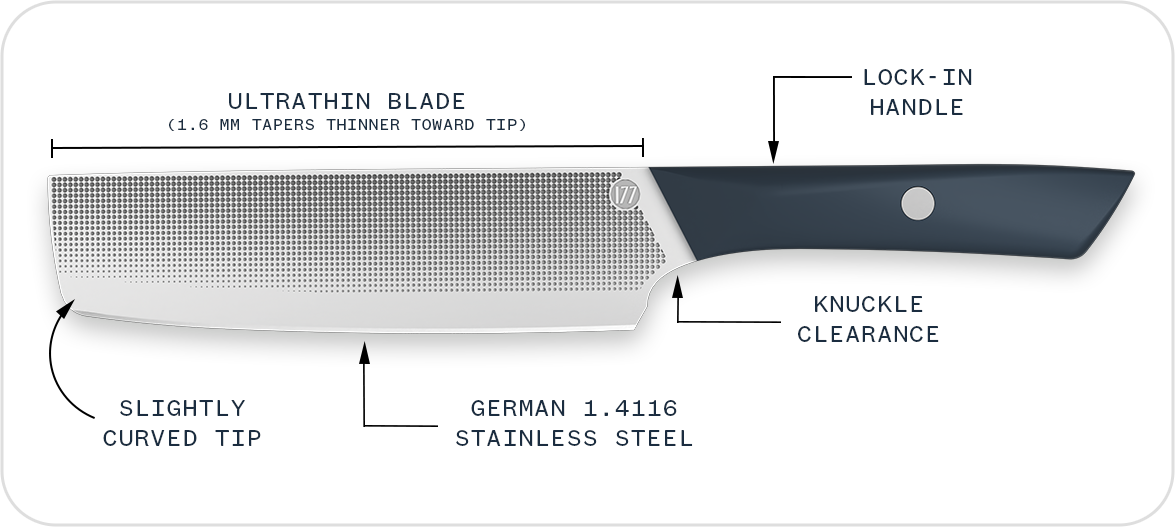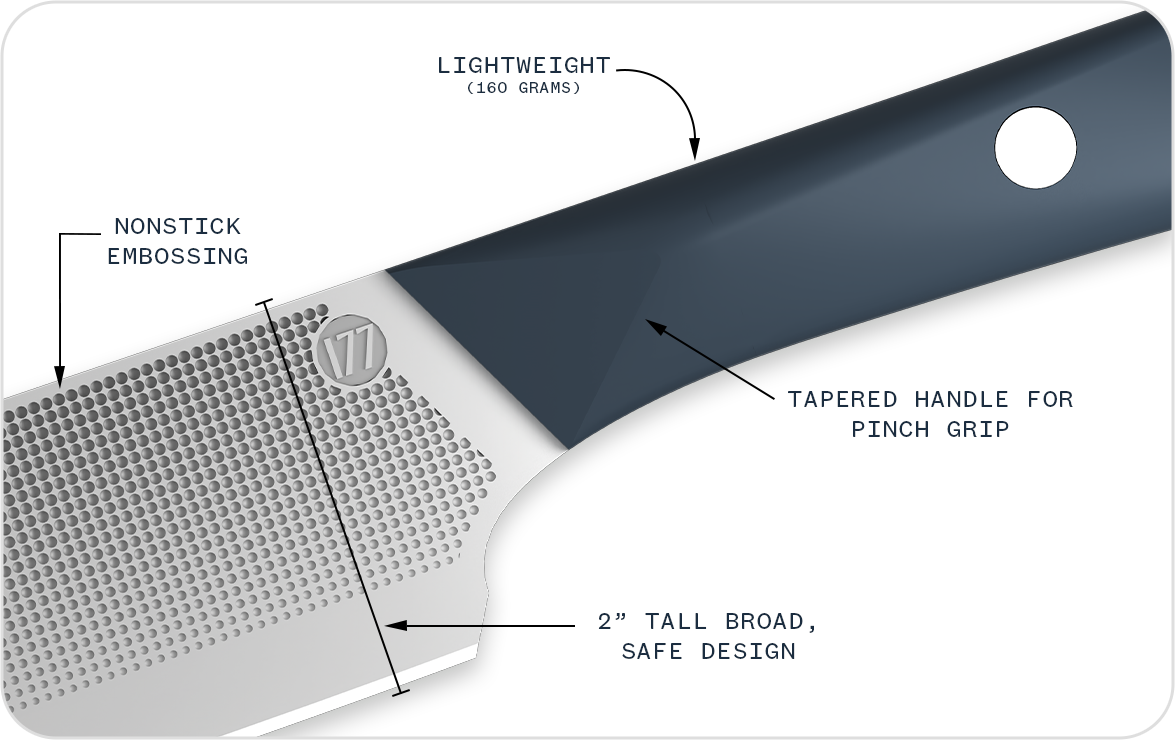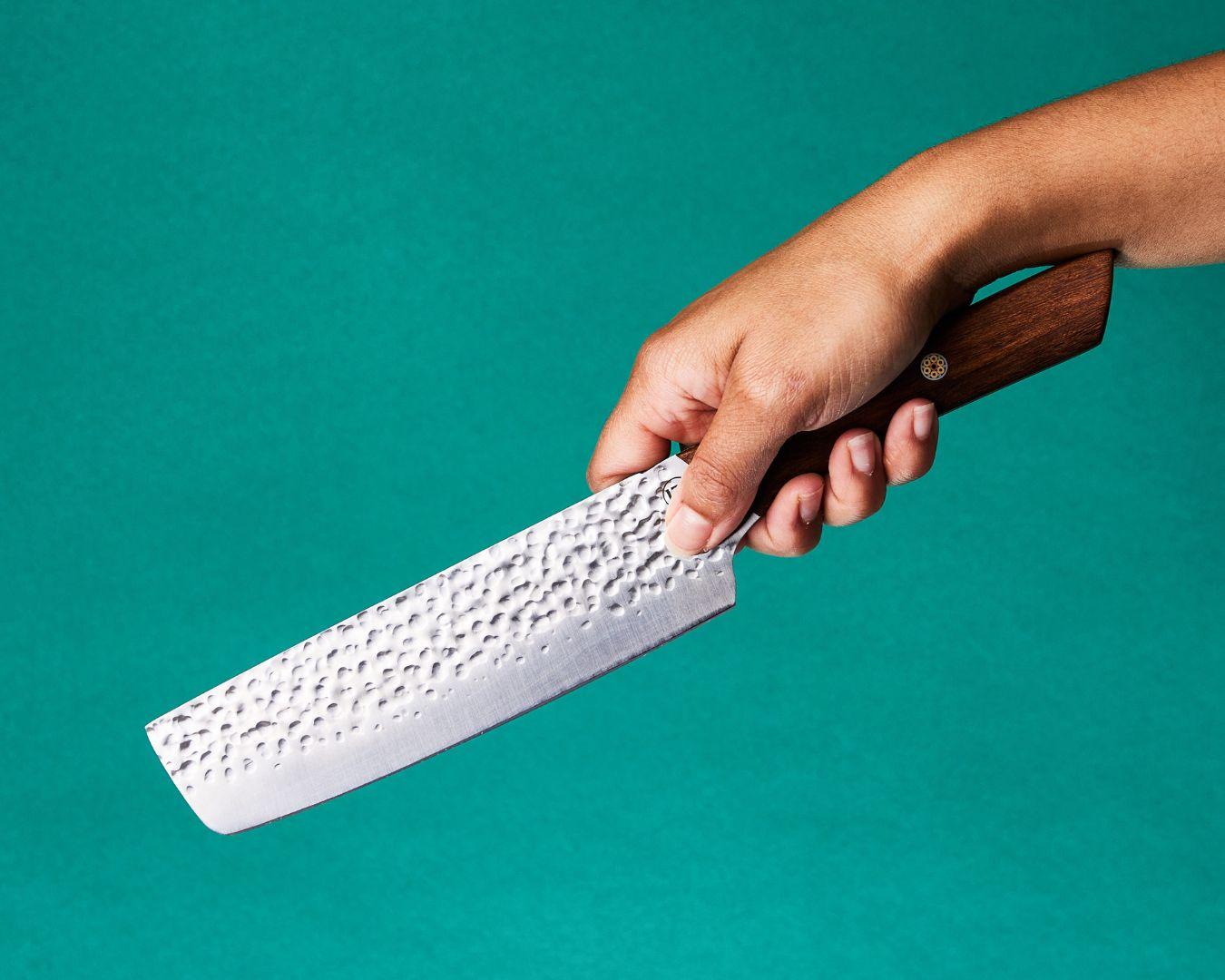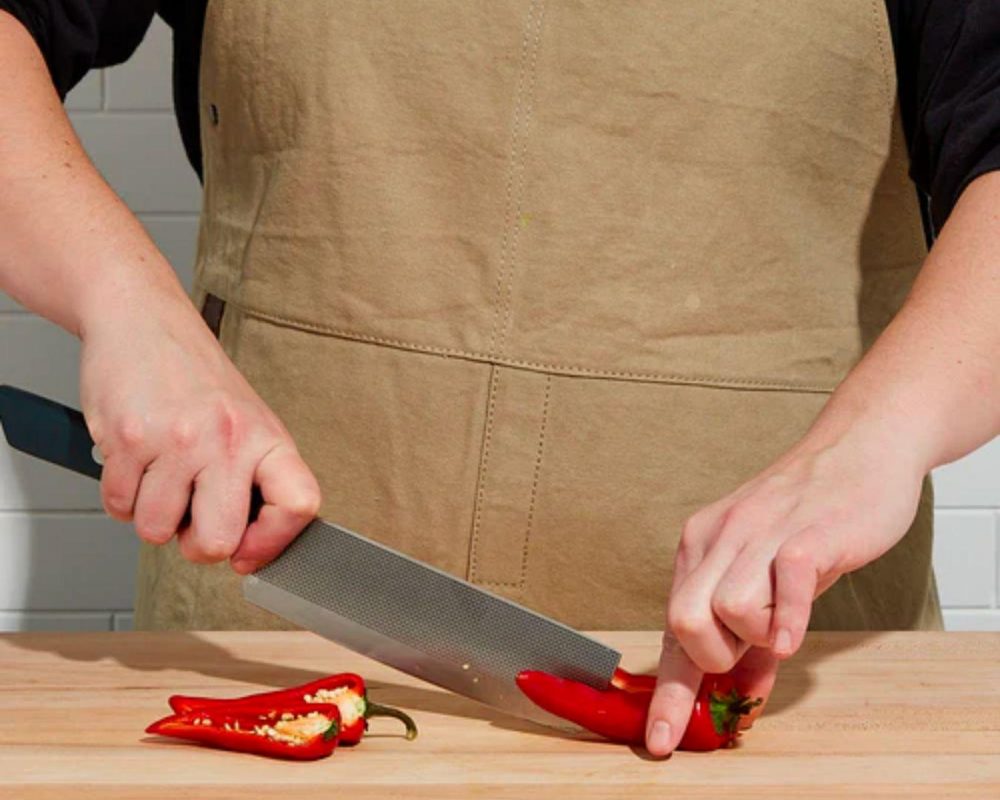For anyone who preps a lot of produce, the nakiri is pretty incomparable. It’s light, thin and sharp, with a design that resembles a mini cleaver (we’ll get to that in a second), so it slips through onions to reduce them to a neatly diced pile and feathers chard into ribbons with maximum ease.
The Milk Street Nakiri challenged what I thought made a good knife; I always figured more heft was better, offering more force to go through a cabbage or the joints of a chicken wing. But a light, sharp knife glides through hard or slippery vegetables precisely and easily, actually offering a faster and safer way to prep.
Scroll down to see what makes it special (and why I think you need one, too).
The Anatomy of the Nakiri

Japanese knife design is imbued with washoku, an approach to cooking that reflects centuries of culinary experience and respect for the preparation of food—namely, every knife should be designed with a specific purpose in mind. Thus, nakiri = vegetable prep.
Our Nakiri has a very thin blade, just 1.6 millimeters at the top, which tapers down to the sharp cutting edge that’s beveled on both sides—good news for righties and lefties, who can use it with equal ease. Being so thin, the blade cuts effortlessly.
More blade isn’t something to be afraid of; it’s a good thing. The 2-inch width shields my fingers when I chop, so I can actually move faster and more confidently.
It’s made from durable German 1.4116 steel, which will hold a keen edge, and the blade’s just the right length for a feeling of control. At 6.75 inches, the Nakiri is short enough for detail work and long enough for clean slicing.

We Added Custom Touches
For our version of the knife, we added a few special touches with the help of veteran industrial designer David Lewin. The first—and what really sets ours apart from other versions available on the market—is a gentle curve to the blade. The curve, which is concentrated near the squared-off tip, means you can rock chop and mince easily; not so with other nakiri knives on the market.
Plus, the full length of the blade is embossed with a nonstick file pattern that replicates the kurouchi (blacksmith) or tsuchime (pear skin) finish to traditional nakiris; even sticky ingredients like potato slices fall right off. And the nonslip handle feels comfortable and secure to use, rather than flimsy. Huzzah!
How to Use It
I don’t know about you, but produce is the overwhelming majority of my prepwork when I’m cooking. The Milk Street Nakiri fluidly turns piles of greens into ribboned cuts, whizzes through herbs, cuts summer squash smoothly into coins and pushes through sweet potato as easily as celery and apples.
And while I use it largely on fruits and vegetables, I’ll whip out the Nakiri for chopping nuts, chocolate, cheese and more—it feels natural, comfortable and light in the hand. As a bonus, the blade is wide enough to work as a bench scraper to transfer chopped veggies to the simmering pot.
Which Nakiri is Right for You?

While the original Milk Street Nakiri is an excellent choice, you’ve got options. If you’re looking for a collectible, heirloom version, our limited edition run of the Premium Nakiri is simply stunning: the same great knife, finished with a hammered steel blade (extra nonstick, even stronger steel), a gorgeous cocobolo wood handle and a mosaic pin as a finishing touch (the final flourish of many high-end Japanese knives).
Looking for a gift for the holidays? This is the knife to get for anyone getting into cooking (or something new for the cook who has it all). It’s also a perfect gift for yourself; my trusty knife is never far during holiday cooking marathons.
And if you like collecting knives from around the world, keep browsing the Milk Street Store—our buyers bring in limited lots of nakiri knives and other traditional styles from trusted knife partners in Japan, so there is always something new to discover
Want more knife content? Read why your cutting board is killing your knives; Watch Matt Card show you the right way to hold your knife; Learn the best way to take care for your knives; Get to know the Milk Street Kitchin-Kiji; and watch Matt Card show you how to cut an onion and dice carrots.
Join the conversation on Facebook, Instagram, TikTok and Pinterest.
And if you're looking for more Milk Street, check out our livestream cooking classes with our favorite chefs, home cooks and friends for global recipes, cooking methods and more.




